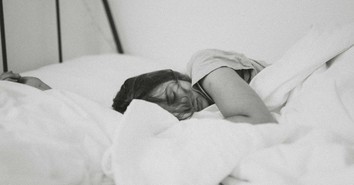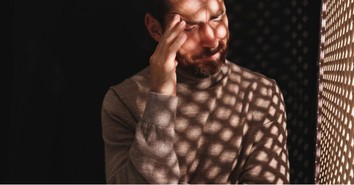5 Themes in Barbie That Will Surprise You

It doesn't matter how old a girl gets; there is something about that one toy they had as a child that instantly welcomes that five-year-old version of her to emerge again. For me, that was and always will be Barbie. That being the case, the opportunity to see the new movie Barbie for an early screening was one I readily took alongside some gal pals and, of course, dressed to the nines as a beloved version of the iconic doll. After leaving the movie, I am left no longer the bright-eyed child version of myself that walked in full of hope and wonder but the grounded adult woman who still loves and adores the toy but is very aware of the reality of this world. The new Barbie movie seeks to speak to the reality of living as a woman in this world rather than to the child within each of us.
1. Historical Objectification of Barbie
Perhaps one of the most common complaints the Barbie brand has ever faced is how she looks and that she is objectified because of how she is designed. In the film, as Barbie enters the "Real World," she is met almost instantly with cat-calling men and comments made about how she looks. Margot Robbie did an exceptional job in playing Barbie so that she did not come across as a Marilyn Monroe type of figure; instead, as human as Barbie became, she did not even give a hint that she desired anything in the way of sexual feeling. Much of this was due to Robbie's personal feelings about Barbie, "She's a doll. She's a plastic doll. She doesn't have organs. If she doesn't have organs, she doesn't have reproductive organs. If she doesn't have reproductive organs, would she even feel sexual desire? No, I don't think she could," Robbie told the magazine. She continued, "She is sexualized. But she should never be sexy. People can project sex onto her. Yes, she can wear a short skirt, but because it's fun and pink. Not because she wanted you to see her butt."
To this, I deeply respect that Robbie did not play Barbie in such a way that was in ill taste. Her outfits were frilly, sometimes a little short, and bright in color, but at no point in the film did you ever feel Barbie trying to invite, welcome, or invoke anything sexually with anyone. There were a handful of jokes or outright mentions of private parts that the film could have solidly done without, but I digress. Barbie's character as a whole did not welcome or offer anything improper, which was refreshing.
2. Nostalgia of the Icon
Nostalgia ran high throughout the film if you had ever grown up in the Barbie era or loved the toys growing up. From the pink everything to unforgettable outfits to even a few special edition Barbie and friends, many Easter eggs were included throughout the film. Some of Barbie's early day friends even joined with Alan and Midge joining the cast, but quite a few were missing, such as Kelly or Tommy. It was clear that the filmmakers did their research and homework on how Barbie has had a cultural impact not just on one generation but on every generation since she was released in 1959.
Even throughout the theater, it was clear that women of every age came out to celebrate the beloved toy, even some husbands and boyfriends to tag along. Perhaps the most significant nod to nostalgia was that of Ruth Handler, the creator of the original doll. Barbie encounters Handler first as a safe haven while on the run and then later in a moment of self-reflection and decision about her own future. The nod to Handler was unexpected, but a rare one in that very seldom are creator's given such recognition, and with her flooded nostalgia in all her one great idea would build over the years.
3. Ken's Role
The movie's tagline was, "She's Barbie…and he's just Ken," and that nearly says it all as to the premise of the movie's plot. Ken begins the movie as a jealous sort of boyfriend desperately aching for Barbie's attention and affection but also deeply needing assurance that he matters as well. After entering "The Real World," Ken becomes obsessed with the idea of patriarchy and men ruling the world, an idea he introduces to the other Kens back in "Barbie Land," and from there, the plot shifts. Ken's role is that of comedy, sidekick, anti-hero, and at the end of the day, a reminder that we all need assurance. The biggest takeaway from Ken's character for me was the reminder that no matter how confident a man may seem, he still needs a reminder that he is worthy. We all do, and perhaps that is where the movie was not one of children's play or imagination but an ever-constant reminder that we are all aching to be told we matter, that we are wanted, and that we hold a role greater than "just Ken."
4. Feminist Themes
Feminism played a role in the film, which is no surprise as it was written and directed by Greta Gerwig, a director known for her feminist views. Several of these themes were blatant, such as the jabs at men, cutting remarks that women are not viewed as equals to men in "The Real World," and most of the male characters being easily beguiled and tricked after they attempt to rule over the land. Overall, the intentions were made clear of a feminist mindset, but the film's main message was not about feminism but realism.
5. 'Ordinary' Barbie
One of the movie's central themes seeks to not only speak to the broadness of being a woman but also identify many of the real-life issues women face. One of the topics America Ferrera's character, Gloria, mentions is the struggle for women to find balance. She offers several places where it feels impossible to find balance as a woman, such as the balance to be thin but not too thin or to be a boss babe but not a threat. At the end of the film, she suggests to the CEO of Mattel, played by Will Ferrell, that the company needs an "Ordinary Barbie" to sell. This Barbie she conveys ought to have a simple but flattering blouse and do her best with the day. In addition to Gloria's comments, Barbie inherits many human feelings, struggles, and qualities as she enters the "Real World" after leaving "Barbie Land." One particularly humorous and perhaps a little too accurate description was "Depressed Barbie," which included Barbie "spending seven hours stalking her estranged best friend's engagement photos on Instagram and re-watching the BBC version of Pride and Prejudice." These aspects of the film shift the once glamorized idea of Barbie taking on big dreams to be anything, making her human, relatable, and ordinary. The end of the film seeks to strip the plastic veneer off of the doll and make her just like you and me, but is that what the audience was craving?
Overall, the film met me with a heavy dose of reality at a personal level. Perhaps parts of me miss the simpler times when I could escape into a world of my own imagination. One is crafting wondrous stories with big dreams of being anything from a teacher to an astronaut, but this movie did not speak to that little girl within. This movie sought to bring to life many of Barbie's iconic looks, accessories, friends, and a good dose of pink, but it also sought to bring to life reality, realism, and struggles this life offers. That being said, the conclusion is left to that of the beholder, but for this self-identified dreamer, I could have used a bit more in the way of thinking outside the pink cardboard box.
Cally Logan is an author and US History teacher from Richmond, Virginia. Her works have been featured on "The 700 Club Interactive," “Jesus Calling Blog,” and “Coffee and Bible Time,” among several notable outlets. She served as a mentor for young women for several years and enjoys challenging women to develop deeper relationships with God and to live fearlessly and authentically. She received her B.A. Degree from Regent University. In her spare time, she enjoys spending time in nature, having genuine chats over coffee, and woodworking. Her new book, The Wallflower That Bloomed, is available everywhere now. Connect with Cally: @CallyLogan Instagram CallyLogan.com
Originally published July 21, 2023.





